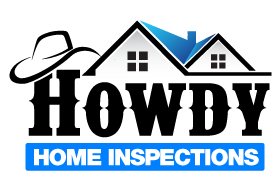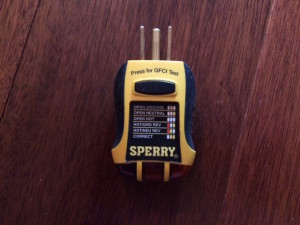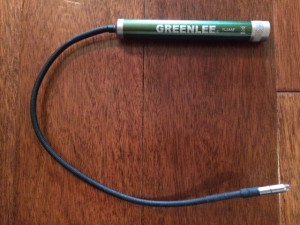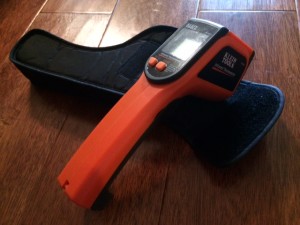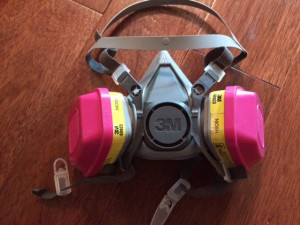Today I thought I would write a quick post about 5 home inspector tools I use. These aren’t all of the tools I use, but they are five that I use at every inspection. Other cool tools are my Infrared Camera, Continuous Radon Machines and Carbon Monoxide Detector to name a few. Each of these tools are made by many different companies, but these are the ones I’ve had the best luck with over the years. Let me know if you have any questions about any of them.
Tool 1 – GFCI Tester
I like to use the Sperry GFCI Tester during all of my inspections. This is a great little tool that lasts a long time. It works by lighting up three neon lamps in different arrangements to indicate seven deficient wiring conditions. It will tell you if a receptacle has an “open ground/hot/neutral” and also if the receptacle has a “hot/ground/neutral reversed”. Reverse Polarity is a dangerous thing and a GFCI tester can find it every time. It also allows you to test the function of GFCI 120 volt outlets. One thing to keep in mind with testers, is that they only test standard 3-wire systems. You can properly install a GFCI on a two-wire system, but you just can’t test it with a GFCI tester. The only way to test these is on the receptacle itself.
Tool 2 – Moisture Meter
My Protimeter Survey Master Dual-Function moisture meter is definitely one of my 5 home inspector tools of choice. The thing I like about this moisture meter is it’s dual function, meaning it has a non-invasive method of measuring moisture as well as a pin measurement that is very useful when getting reading the attics and crawlspaces. The non-invasive method is able to measure 3/4 “ below the surface and best of all it’s not affected by surface moisture. This works great for shower surrounds.
Tool 3 – Flexible Flashlight
I’ve had many of these and right now I’m using one made by GreenLee. So far, I’m pretty happy with it. I use these flexible flashlights to look at the burner chambers and heat exchangers of furnaces. I use it at every inspection. There’s simply no way to check deep into the heat exchanger without a flexible flashlight. This one is 16” long, so while it’s more inconvenient to lug around, I can get a really good look at things when I’m using it. Another feature I like is the PVC coated cable, which allows me to bend the flashlight in any position and have it stay in place.
Tool 4 – Infrared Thermometer
My favorite infrared thermometer is the Klein IR1000. I figure if its accurate enough for a chemistry lab, its good enough for me to measure temperature differentials of your HVAC. This IR thermometer is nice because the temperature range is -58 – +1000 degrees Fahrenheit. It also has a 12:1 spot ratio, which allows you check a wide range of areas and environments. It’s a little pricey, but I’ve been happy with mine. It also comes in orange incase you live in Alaska or Iceland and lose it in the snow.
Tool 5 – Respirator
Last but not least, the most important of my 5 home inspector tools is a respirator. A lot of people don’t use respirators because they’re big and tough and cool…. Not me! Our health is the only thing we have we’re in several attics and crawlspaces a day. I want to make sure in 30 years my lungs are still healthy and I’m still able to keep up with my son on the mountain biking trails. I use a half-face mask 3M air purifying respirator. Air purifying respirators fall into several categories – N-100, P-100 and R-100. N-100 masks are designed for non-oil based particles and are great for folks in construction, agriculture and food processing. Acutally, I’m going to save this whole mask thing for another post. Here’s a photo of the respirator I use. Unlike most inspectors, I wear mine in the attic and crawlspaces. Nothing is more important than our health.
So that’s it. These are 5 home inspector tools that I use at every inspection. I’ll write up an article soon talking about the differences in N100, P-100 and R-100 respirators. I’ll also try to write one about my continuous radon machines and how they compare to activated charcoal tests. You can click on the link to learn if you should test for radon during your home inspection
Be Happy and Be Kind,
T.J. Thorne
